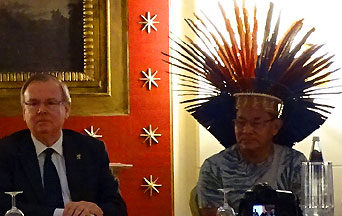
Below is the text of a talk given by Jonas Marcolinio, an indigenous Brazilian leader, at the TFP-sponsored October 5 Synod Conference held in Rome. It has been edited and shortened for this publication.
I am very proud to represent the native Amazon peoples at this conference organized by the Plinio Corrêa de Oliveira Institute. I appreciate your invitation to speak in the eternal Rome of antiquity and the Popes. It is a symbolic podium for the world.
Urî Jonas Marcolino, macusi, Brazilian, Maikan Pisi Wei Tî´pî po, tîko´mansen urî.
I am Jonas Marcolino, a Macuxi Brazilian, and live in the indigenous land called Raposa Serra do Sol. Congratulations to the Plinio Corrêa de Oliveira Institute for giving a voice and opportunity to speak to native Brazilians from the Amazon.
Our Story
Our leadership and struggle started a long time ago. In 2008, we Indians participated in the seminar titled “Threatened Sovereignty over the Amazon: Farce or Reality,” held in São Paulo at the request of an assembly of more than one hundred groups.
During that seminar, I attended as a Macuxi indigenous leader and a director of the United Indigenous of North Roraima’s Defense Society (SODIU-RR). I told the assembly that until the age of eighteen, I had a hard time making ends meet since I hunted and fished for a living. Although my parents were illiterate, I became a math teacher and completed my law degree. I and the peoples I represented, were totally opposed to the demarcation of our Reservation.
We are the majority in the region. Nonetheless, the socialist government of the Workers Party (PT) and the Supreme Court would not listen to us. When asked by the press, I clearly outlined the situation of the Macuxis living in the reservation area. I told them that we oppose the demarcation of the borders of the reservation that would expel the whites living in the area. We represent 70% of the roughly 12,000 Macuxis living in Raposa Serra do Sol area.
We Indians are integrated into society. We use electricity, cars, and buses. We have productive villages. We want to have access to these modern tools so that we can progress. The problem is that some people think we must live in the Stone Age. They believe we must survive by hunting and fishing. The FUNAI (National Indian Foundation) policy prohibits access to development. This policy condemns us to backwardness.
The Case for Integration From a Native Viewpoint
Indigenous peoples were in the Americas long before the Portuguese and any other Old World nations arrived. They lived, got along and fought one another. Some went extinct, while others moved to other parts.
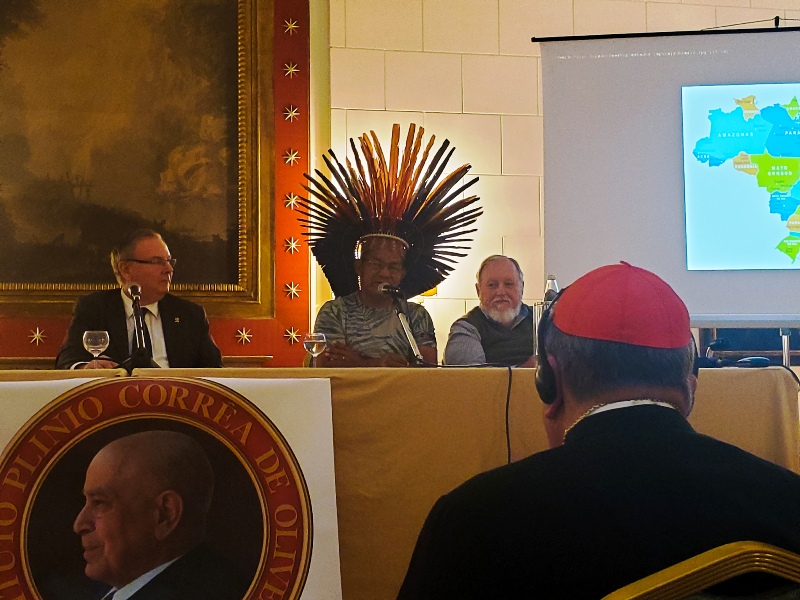
As is well known, pioneers, adventurers, captains of rescue troops, missionaries, naturalists, botanists, zoologists, ethnologists, anthropologists and scientists entered the Amazon region. Those scholars saw the opportunity and possibility of giving the natives a new lifestyle.
This process of cultural change tended to assimilate indigenous tribes into a national society. It led to a process of interpenetration and fusion of cultures, traditions, feelings and attitudes. By living together, these peoples and groups shared the same experiences and stories and eventually incorporated into a common cultural life.
The Arrival of the Liberation Theology Missionaries
Unfortunately, this construction of this common cultural life was dismantled by liberation theology missionaries, members of ecological and environmental movements, and by NGO functionaries. They raised millions on behalf of the Indians solely to benefit their interests or those of their financiers. Outside influences were endless.
From the mid-twentieth century on, many “indigenists,” religious missionaries, civilians, politicians and even Indians entered the scene. National and international NGOs joined them. Everyone strictly pursued the communist-missionary ideal under the new ‘aggiornata’ or updated concept of the Catholic Church. Plinio Corrêa de Oliveira prophetically denounced this trend in his 1977 work, Indian Tribalism: the Communist-Missionary Ideal for Brazil in the Twenty-First Century.
These new missionaries worked hard for a false ideal, which Professor Plinio describes thus:
The end is to retrocede, taking the aborigine as a model.
In order to retrocede, destroy.
To destroy: defame, divide and make war.
A Desire to Work Together
However, the Indians never intended to move backward. They want to enjoy freedom. They want to progress by securing all the inviolable and inalienable rights indispensable to enjoy human dignity. The conflicts and wars fought in the past, upon the arrival of Europeans, are behind us.
Thousands of indigenous people are already integrated into a shared civilization. They no longer live in the Stone Age or practice anthropophagy (cannibalism). The few indigenous tribes that still practice infanticide in Brazil today do it because they have received suggestions to continue the practice, which violates their inviolable right to life, liberty, security and dignity.
Many practices among indigenous people in the Amazon, such as long-distance walking, carrying manioc in jamaxin, timber and wood on the shoulder, straw on the head, etc., continue because we need them to survive, not because they are traditional or have cultural value.
The History of Roraima
In Roraima where I live, the first permanent contact between Indians and whites came with the beginning of the construction of Fort São Joaquim in 1775. The settlement was built at the behest of the Portuguese crown, where the Uraricoera and Tacutu Rivers meet to form the Rio Branco. It was built with slave labor, including that of indigenous peoples.
In 1787, the São Marcos plantation was founded, also with the participation of the region’s indigenous labor force, forcibly recruited. However, the process of interaction between Indians and whites resulted in the reciprocal assimilation of the cultures of both peoples and their later integration. Catholic and Protestant missionaries began the work of evangelization among indigenous peoples in the regions of Surumu and Cotingo. This work was permanently established by the second decade of the twentieth century.
Among Catholics, the most outstanding missionary was Fr. Alcuin. Mr. Ze Massaranduba recounts: “Fr. Alcuin permanently lived with the Indians. He spoke the Macuxi language fluently. In addition to saying Masses, holding Baptisms and officiating at weddings, he worked in the fields. He also participated in Parichara, Hallelujah and Tukui dances, and gained the confidence of the Indians.”
In 1939, the first local markets were founded in Surumu. The community was elevated to the category of a village in 1960.
In 1949, the São José Mission, São Camilo Hospital, and Padre José de Anchieta School were established and manned mainly by missionaries of the Consolata Mission. This development began a new phase in the history of the indigenous peoples of the State of Roraima.
The Rondon Project
That mission model started out well. Later, however, when the new liberation theology missionaries arrived, they used the same tools—mission, hospital and school—to implement a reverse policy to dismantle the local economy, based on livestock, irrigated rice fields, and subsistence agriculture.
The dismantling process of the eighties culminated in the removal of white farmers in the nineties and irrigated rice producers in 2005. This was done to make way for the ill-fated demarcation of the Raposa Serra do Sol Indian Reservation.
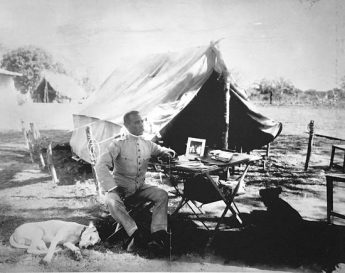
I note that during this period, the Indians were practically integrated into the national culture. This process reached its height with the remarkable presence and action of Marshal Candido Rondon in the Macuxi indigenous villages of the State of Roraima. Rondon was an exceptional hero who, even after his death, moved universities, professionals, academics, the army and navy to create the Rondon Project. The plan inspired university students to know the Brazilian reality and to participate in the development process of these distant regions. The federal government permanently established that institution in June 1968 with the motto: “Integrate Not to Surrender,” which replaced the earlier, “The Jungle is Not Our Enemy.”
All this development refers to the vast Amazon region. Although the Amazon belongs to Brazil, it is often not so beloved or wanted by most Brazilians. However, we Indians and Amazonians, who inhabit this immense territory, love and unconditionally defend it. Our lives and future generations depend on its water and mineral resources, in short, on its biome.
We need to unite with generous peoples everywhere to give Indians quality technological, scientific and humanistic education, economic freedom, security, peace, and harmony to ensure a fortunate and progressive present and future.
The Bad Influence of New Religious Teaching and the NGOs
The missionaries of the Consolata Mission came to the Rio Branco Territory in 1948 to direct the mission previously founded by the Benedictines, to catechize the Indians.
However, in the seventies, new missionaries connected with liberation theology arrived and began to change things, producing adverse effects.
For example, the local farmers made large investments to strengthen and expand the São José Mission. They donated 100, 200 and even 300 head of cattle to the Mission. They never imagined the new missionary priests, whom they treated with the highest respect and affection, would use these resources to expel them from the region.
The new missionaries upended even the Commandments of God’s Law.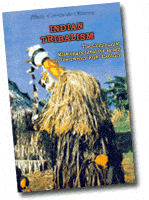
FREE READ: Indian Tribalism: The Communist-Missionary Ideal for Brazil in the Twenty-First Century
Mr. Edmilson das Neves, popularly known as Nego da Guanabara, says that in 1971, Father Jorge officiated at his wedding at the Contão indigenous community. On that occasion, Father Jorge preached the word of God, spoke about the Ten Commandments, which, as you recall, include “thou shalt not steal.” In the mid-eighties, when Nego met this priest at the Canta Galo community, he asked why he had changed his preaching by telling the Indians to steal the white farmers’ cattle, thus undoing his prior preaching. Father Jorge replied, “There are many types of theft. Stealing out of necessity or because someone is a kleptomaniac…” Finally, Nego said, “The man spoke so much … and almost convinced me that stealing is right.”
Likewise, the Tuxaua Indian Hilario from the Sugar Cane Community told of an incident after Mass. While still inside the church, Sister Augusta told the Indians to expel the white farmer from the nearby Aratanha Farm. This could be done by cutting the wire fences. If the farmer mended the fences, they were to kill his cattle until he left. Thus, the Indians would recoup their invaded lands. Many such accounts demonstrate the enormous about-face brought about by the introduction of liberation theology.
Evil Deeds and Ideologies
Besides preaching theft, these new preachers are suspected of betrayal and even murder.
Grandma Monica, an elder in the Camararém community, tells, for example, how Father Jorge Dalden arrived in Maturuca and asked for permission to live there. In a humane gesture, the Tuxaua Indian Lauro Merikior welcomed him.
After a few months, the priest disappeared from the community, taking Young Jaci with him. When they arrived back, the Tuxaua Lauro suddenly died. For Grandma Monica, Father Jorge killed him so that Jaci would take charge of Maturuca and promote his agenda in the region. Lauro Merikior had inherited the sword of his father Meriquior, which the latter had received from Marshal Rondon.
In the face of these and other accounts of immoral deeds, the missionaries seem to be propagating liberation theology under the aegis of Communism, or vice versa.
Dismantling the Work of a Century
In three decades, these missionaries managed to undo the good works of over a century in the State of Roraima. That century of prosperity was based on economic freedom, private property. It was founded on the principles of capitalist economics with an emphasis on the principle of freedom to work. In a short time, they destroyed everything in the name of primitivism.
Another tactic consisted of dividing. The large communities, described in chronicles of the Rondon Project, were dissolved into numerous small communities as a means of occupying more territory and dissolving private properties, that is, farms.
The great Tuxauas or traditional leaders thus ceased being great leaders because any head of a family could have the same power as a great Tuxaua. Thus, those promoting primitivism consolidated communist ideas into indigenous communities. They would hold brainwashing sessions at general assemblies of Tuxauas that would last for endless nights for many weeks. The process went on for about five decades.
 Learn All About the Prophecies of Our Lady of Good Success About Our Times
Learn All About the Prophecies of Our Lady of Good Success About Our Times
They instilled predominantly communist ideas, according to which there are no bosses or employees. All goods are considered common property. According to an English philosopher, “the disadvantage of capitalism is the unequal distribution of wealth; the advantage of socialism is the equal distribution of miseries.” According to Dr. George Bry, one of the greatest defenders of the principles of freedom to work, “A society without freedom and property is immobilized in inertia and misery.”
As the Indians saw it, all their progress up to this time had no legitimacy. Ideologies of religious men such as Jorge, Sabino, Pedro, Tiago, and religious women like Sisters Augusta, Teresa and others, indoctrinated Indians into stealing, killing ranchers’ cattle, hating white men, invading private property, refusing electricity, roads, security, etc. and even hating their blood relatives. Some Indians still lament and wonder why and how their own brothers, fathers or brothers-in-law became their enemies. Dividing peoples is typically a Satanic work; therefore, it cannot be the fruit of men and women of God.
The National Indian Foundation and Others Work to Isolate Indians
In 1993, the Contão indigenous community already had electricity, running water, and a community satellite dish. That same year I received a petition signed by some Tuxauas and Surumu leaders. The document was against whites, politicians, roads, electric power, the army, and alcoholic beverages. We, Indians who have enjoyed the benefits of these things for more than five years, could not be silent. We did not want to be isolated from our fellow citizens. Thus, in September 1993, we created the United Indigenous of North Roraima’s Defense Society (SODIURR) to represent our interests and promote socio-economic and cultural development.
At that time, the National Indian Foundation (FUNAI) of the Diocese of Roraima under the direction of Bishop Aldo Mongiano, the Indigenous Missionary Council (CIMI) of the National Conference of Bishops of Brazil (CNBB), the Roraima Indigenous Council, and other NGOs marched together under the banner of putting Indians on reservations without the presence of whites. This isolation policy is in practice throughout Brazil and is now being implemented with the Yanomai and Wamiri-atroari Indians.
The Indians on these reservations are not free but are controlled by “indigenists” who enjoy privileges to the detriment of the Indians. Two other Macuxi Indians and I verified this lack of freedom when we tried to spend a week among the Waimiris. Arriving at the border checkpoint, which closes daily from 6 p.m. to 6 a.m., leader Mário Paroê instructed us to go to Manaus to ask permission to stay with them. We went to Manaus, where they did not even receive us and, via intercom, refused permission, forcing us to leave the reservation.
What the Popes Have to Say About Socialism
In 1987, one episode was even recorded in the minutes of one of those Tuxaua assemblies in Surumu. The Indians were given a challenge: Who would kill the most cattle from the white farmers. Tuxaua Sivaldo, a Ticoça indigenous community member, reports that after the challenge, the Indians went into action. It became normal to find three or four dead cows hanging in their home community of Maturuca. These cows belonged to white farmers. This wave of cattle slaughter angered ranchers to the point that they reinforced farm security with civilian and military police officers. This was especially done in 1988 at the height of cattle thefts. In 1993, Jair Reis, considered one of the largest ranchers, told me that thieves always stole an average of about 5% of his herd. However, from 1987 onwards, 50% of the herd was taken. Under these conditions, he could no longer stay in the area.
That was the consolidation of Bishop Aldo Mongiano’s strategic plan. He sought to upset and destroy Roraima’s economy, and he succeeded.
The Work of the NGOs
The Diocese of Roraima rejected the concept of integration or the idea that “to be a Brazilian, you must not be an Indian.” This is clear proof that the bishops and priests of liberation theology seek to separate Indians from whites in order to subjugate the Indians themselves. By their fruit, we know who is good or not.
There are hundreds, if not thousands of NGOs working in the Amazon. These include Brazilian, indigenous, and foreign. Among the foreign ones, there stands out Greenpeace, the Club of Rome, and Survival International. The Brazilian groups include Isa and MST. The indigenous organizations are CIR, SODIUR, and others. With the exception of SODIUR, they all swear by the gospel of the World Council of Churches, especially its document addressed to missionary organizations in Brazil, approved on July 1981.
In this document, Brazil was awarded Guideline no. 4; Venezuela, Peru, and Bolivia, Guideline no. 1, 2 and 3, respectively; and other South American countries, Guideline no. 5.
The document’s paragraph A says that the entire Amazon region, most of which is found in Brazil but also comprises parts of Venezuela, Colombia and Peru, is considered as a World Heritage Site. The possession of this vast area by the aforementioned countries is merely circumstantial not only by decision of all the organizations present at the Symposium but also by the philosophical decision of the more than one thousand members of the various Councils of Defense of Indians and Environment.
The Articles of the Brazilian Constitution
Although in 1987, the National Congress considered the document apocryphal, it is fully in force in the Amazon. In indigenous communities, we see hostile behavior toward any non-indigenous person and love of priest-missionaries. There are preservationist speeches on the environment, protests against opening roads in indigenous reservations, and hostility toward everything that civilization calls progress. This attitude is public and notorious.
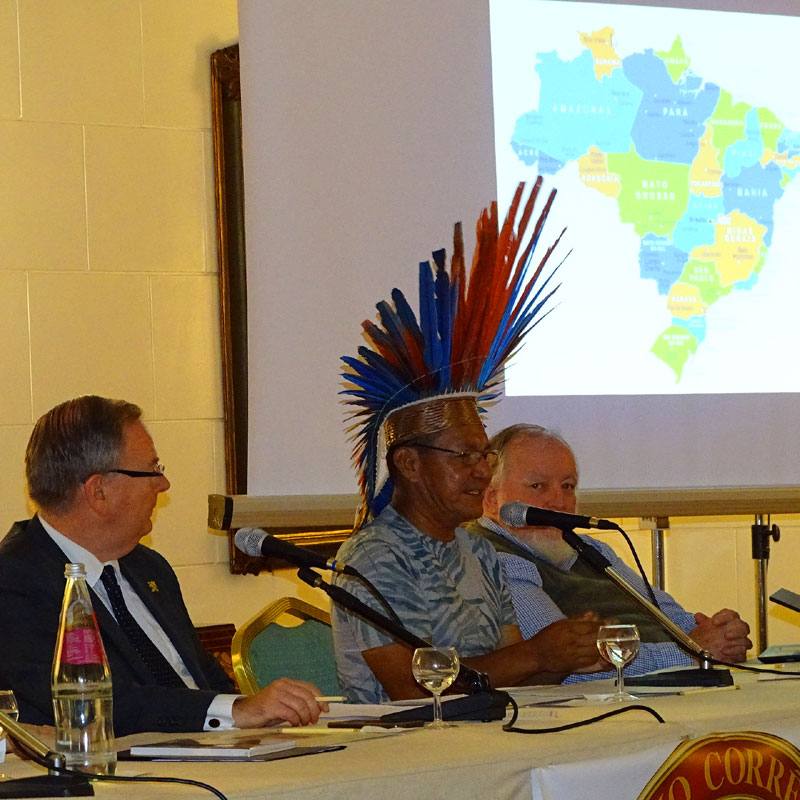
CIMI-led NGOs pressured Brazilian constituent legislators to approve Chapter VII of the Federal Constitution, which resulted in Articles 231 and 232 about the Indians.
For legal scholars, Art 231 put an end to Marshal Rondon’s integration policy. Article 231 says, “Indians are recognized for their social organization, customs, languages and traditions, and original rights over the land they traditionally occupy, and it is up to the Union to demarcate, protect, and enforce all their property.”
To interpret this article literally is, at the very least, to defend the stratified ills happening among indigenous peoples for the past five centuries.
The Appearance of Real Indigenous Leaders
I will now conclude.
Our leadership has been growing and getting other native peoples out of this unfortunate dictatorship of CIMI missionaries and indigenous NGOs. The monopoly of chieftains such as Raoni, who was with Pope Francis and French President Macron, does not represent the peoples of the Amazon. This is all the more true with the freedom we have achieved under President Bolsonaro’s new government.
At the opening of the UN Session on September 24, the Brazilian president took along the Indian woman Ysani Kalapalo who enjoys the support of the Indigenous Farmers and Producers Group, which brings together at least 52 indigenous peoples.
Testimonials obtained by the magazine Catolicismo confirm the desire of new Indian leaders such as Kaynä Munduruku. She shows that the situation of indigenous peoples has changed. They are awakening, seeking more freedom, and do not accept anthropologists and indigenists who try to “impose an identity” on them: “We know who we are.”
Kaynä concludes: “What needs to be done for indigenous peoples is to give them the opportunity to work. Who can buy things and have a good and healthy life on welfare? No one. The Indian needs to produce. He is not lazy. He is talented and very intelligent. He knows how to plant and produce; he needs the opportunity. With work opportunities, the indigenous people will make major contributions to Brazil’s economy.”
The Need to Work Together
In conclusion, the absolute majority of Indians in the Brazilian Amazon region aspire to full freedom to promote quality education. They want their potential, willpower, aptitudes, and creative and enterprising spirit developed to a maximum, thus becoming great entrepreneurs with their own businesses, and producing their own riches.
All this will be possible if Indians, blacks, whites, yellows, and mixed-race peoples unite and pull together their efforts, ideas and resources. In short, Brazilians and foreigners must also unite with a spirit of humanity and virtue, fighting for the freedom and dignity of all without discrimination.
I close by congratulating the Plinio Corrêa de Oliveira Institute once again for giving a voice to native Amazonian Brazilians. I regret the fact that the Pan-Amazon Synod beginning tomorrow has not invited any Indigenous leader in disagreement with the communist missionary current.
More articles related to the Synod on the Amazon may be found on Pan-Amazon Synod Watch, at https://panamazonsynodwatch.com/.

